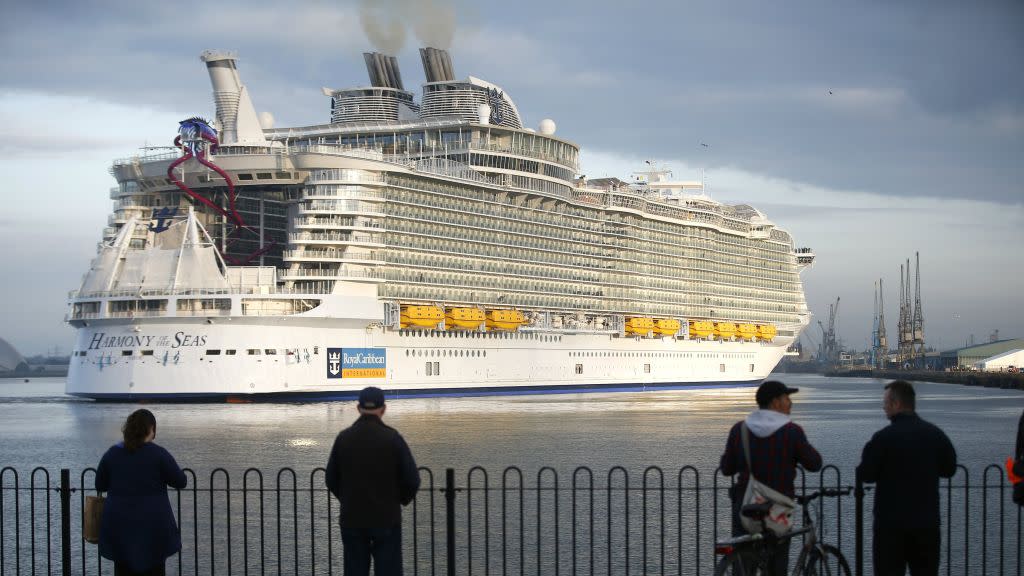Facial recognition is making its way to cruise ships

On May 14, San Francisco became the first US city to ban police and government agencies from using facial recognition. On May 22, Amazon shareholders will vote on whether to restrict the company’s sale of its own facial recognition software. But at cruise operator Royal Caribbean, facial recognition still has plenty of potential.
Like some airlines, Royal Caribbean has started to roll out facial recognition and other technologies to streamline its boarding process. The company’s SVP of digital, Jay Schneider, tells Quartz that the typical wait time to board is 10 minutes with a mobile boarding pass; less if the passenger opts into facial recognition by uploading a “security selfie.” Before those additions, he says the typical wait time was around 90 minutes.
“We wanted it to be a welcoming experience, such that the agent knows who you are when you’re getting there,” Schneider says, adding that the company wants to turn facial recognition “not into a stop and frisk moment, but into a way to welcome you on vacation, answer any questions, and let me just get you on your way.”
As people churn through the line faster with mobile boarding passes and facial recognition, the rest of the line benefits as well—that 90-minute wait will average more like 20 minutes for even those passengers boarding the old-fashioned way. Schneider says Royal Caribbean deletes security selfies at the end of each trip, to avoid storing data any longer than necessary.
Royal Caribbean has also rolled out mobile boarding to board its crew members; Schneider says the technology saves the company 50,000 crew hours each year. (In the case of Royal Caribbean’s largest ship, a single voyage could carry up to 6,000 passengers and 2,500 crew members.)
Technologically, facial recognition is old news. Facebook has been using it to tag photos for years, and Google Photos uses it to organize your personal photos and suggest who you should share them with. Facial recognition can be used to unlock newer iPhone models, and police have been employing some form of it for years to check for fraud on state identification.
But as facial recognition becomes more common in the physical world, it offers as much potential to businesses as it does police and government agencies—particularly in the service of customer convenience.
In this specific case, vacationers want to get on their cruise ship faster, and Royal Caribbean wants the same thing. The customer is providing some data for a limited-time use, and gets a convenience in return. It’s a transaction we’re likely to see more and more: Disney has also been researching facial recognition (pdf), and reportedly rolled it out in Disneyland Tokyo in 2017. In China, facial recognition is already commonplace, as companies like Alibaba normalize the idea of using it to pay for things.
Businesses are focusing their use of facial recognition on convenience rather than entirely new experiences, just as Amazon Go stores don’t revolutionize the act of picking out a bag of chips, but instead eliminate the friction of waiting on line and checking out. Facial recognition to board a ship only makes the process faster. These kinds of low-stakes interactions show two kinds of return for technology companies, making life easier for their customers while normalizing facial recognition and the collection of real-world data.
While science fiction has long depicted the potential consequences of a large-scale government surveillance network, our immediate future is more likely to be a privatized panoply of surveillance, like the one that exists today on the internet. Royal Caribbean says it deletes customer data after each trip, but no US policy mandates that companies adopt that stance. It’s likewise possible that such photos could be used for less benign operations on the ship, like identifying people in security footage.
To that end, Royal Caribbean is also working with US Customs and Border Patrol (CBP) to test its facial recognition program for re-entry to the US.
“You see the CBP continuing to explore the use of facial recognition more and more,” Schneider says. “The reason they’re doing it that we like is that it dramatically streamlines the process of getting off of a ship, or eventually off of an airplane. They like it obviously for different security reasons. But it does actually help from a guest perspective to get off the ship faster.”
Correction: A previous version of this article stated that Royal Caribbean used facial recognition to board its crew. It currently only uses a mobile boarding app.
Sign up for the Quartz Daily Brief, our free daily newsletter with the world’s most important and interesting news.
More stories from Quartz:

